NVIDIA SHIELD Android TV Console Adds Support for Vudu, HDR and 4Kp60 Content
by Anton Shilov on May 18, 2016 6:00 PM EST- Posted in
- Consoles
- Shield
- NVIDIA
- Android TV
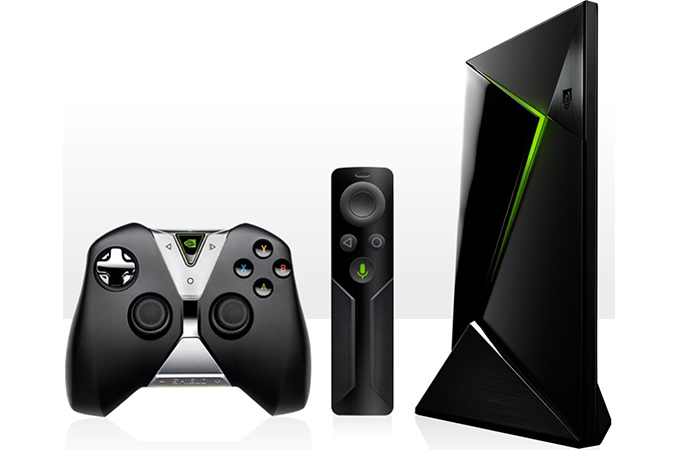
The NVIDIA SHIELD Android TV set-top-box continues to be the most advanced device featuring Google’s TV platform even a year after it was introduced into the market. The credit goes mainly to the high-end Tegra X1 SoC as well as the rich feature-set that has been getting continuous updates from NVIDIA. Today, the company is announcing several important improvements to the unit, including support for HDR as well as 4Kp60 playback.
The NVIDIA SHIELD Android TV has rather rich gaming capabilities. It supports a library of Android games compatible with its gamepad. It also supports GameStream technology, which allows for games to be streamed from a suitably equipped GeForce GTX PC. Besides, it supports the GeForce Now subscription service, which can stream new games rendered in NVIDIA’s datacenters to the console. In addition to games, NVIDIA has also been serious about enabling access to other types of content, including movies, music, sports and news.
At its launch a year ago, the NVIDIA SHIELD Android TV supported various video streaming services. The most popular among them included Netflix, YouTube, Hulu Plus and Vevo. However, certain services such as Vudu were notably absent. At the Google I/O conference today, NVIDIA announced that its upcoming Upgrade 3.2 for the SHIELD Android TV will bring support for new content providers, including ABC, Vudu, Spotify, MTV and Disney.
The Vudu content delivery application for Google’s Android TV will support streaming of ultra-high-definition 4K movies, adding another option for premium TV owners. In addition to UHD video, Vudu promises to support Dolby Atmos surround sound audio. Dolby Atmos is a nice addition to SHIELD’s lossless audio support. The Vudu Android TV app will be an exclusive on the SHIELD Android TV for some time to come. Owners of the device will be able to acquire 4K content from more than six providers, including Netflix, Hulu, HBO Go, Vudu, Plex, UltraFlix and Curiosity Stream.
While Vudu is a new addition to the NVIDIA SHIELD Android TV, the Netflix app is also receiving improvements. With Upgrade 3.2, SHIELD Android TV owners can now play back select 4K titles with HDR (high dynamic range). From a technical standpoint, HDR-mastered 4K video streams contain special metadata flags that help HDMI 2.0a-supporting hardware to display scenes with 10-bit color depth and a greater color gamut properly. We already saw in our review that Netflix streams HEVC 10-bit video for some of the 4K titles, though all 10-bit videos are not necessarily HDR-enabled.
HDR support will not be limited only to Netflix. NVIDIA also plans to add HDR streaming to its GameStream technology later this summer. Encoding of HDR-enabled streams will only be available on GeForce GTX graphics cards based on the company’s latest Pascal architecture. This is not really surprising as the GP104 is currently the only GPU in NVIDIA’s arsenal with the hardware-accelerated 10b encoding necessary for HDR with good quality.
Although the SHIELD Android TV was the industry’s first Android TV STB capable of decoding and displaying 4Kp60 (3840x2160 resolution at 60 fps) content, users were limited to local content in order to experience it. This will be changing shortly, as YouTube will soon make 4Kp60 content available on the STB.
While NVIDIA has not revealed everything that is set to come to the SHIELD Android TV in the next few months, it did confirm that the STB will definitely get an upgrade to the next-generation Android N. The future Android TV operating system will support features such as live TV recording, picture-in-picture and so on. Given the fact that NVIDIA has been updating its SHIELD set-top-box regularly in the past year, it is likely that the company will upgrade it to the new Android TV version once the latter is released.
While NVIDIA is making the SHIELD Android TV better for existing users, the company is also working to expand its customer base. For a limited time only, it will bundle the SHIELD Remote ($49.99) for free along with the SHIELD 16 GB ($199.99) and the SHIELD Pro 500 GB ($299.99) set-top-boxes.
Source: NVIDIA


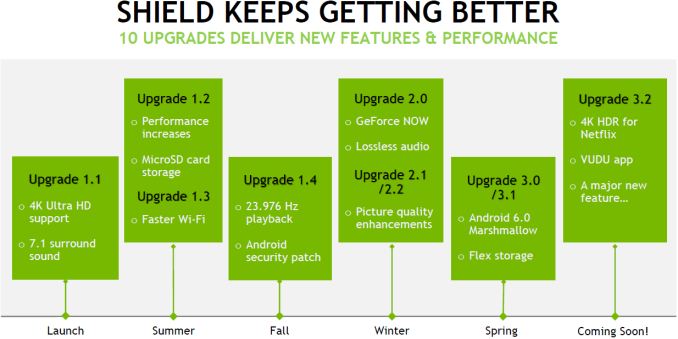
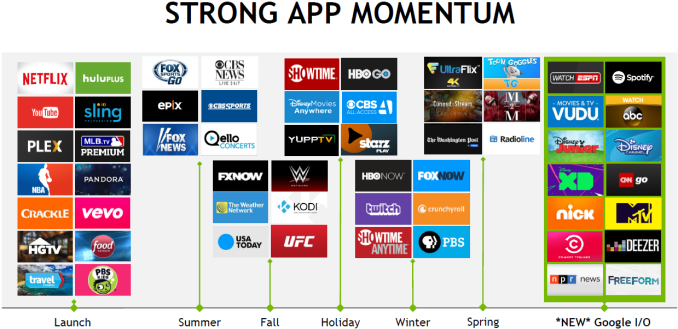
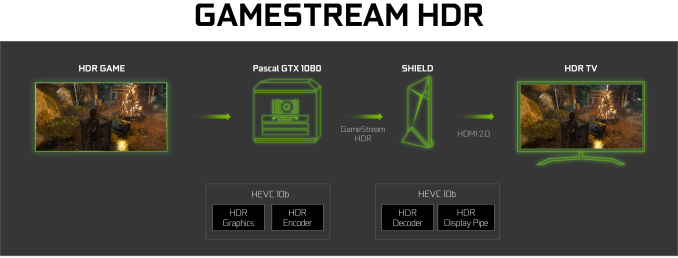

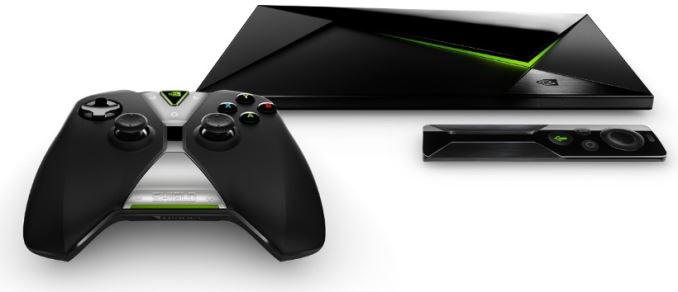














39 Comments
View All Comments
kaidenshi - Wednesday, May 18, 2016 - link
It's great for emulation, I have ePSXe loaded up and all my PSX game discs copied to bin/cue format on the SD card. The controller is a bit odd since it more closely emulates the Xbox controller layout, but it works.Impulses - Thursday, May 19, 2016 - link
Hmm, hadn't really thought about using one for emulators, suddenly it's a bit more tempting...nathanddrews - Thursday, May 19, 2016 - link
Shield + Retroarch = happiness.Since the GTX 950 and 960 also have hardware encode/decode of HEVC 10-bit, there's no reason that HDR would/should be limited to Pascal. HDR is a lightweight metadata stream transmitted on top of the HEVC stream.
Also, what exactly constitutes an HDR game? HDR rendering has been part of DX since 2003 and OGL for a long time as well. Also, no reason it can't be done over DisplayPort. We'll just need new monitors... and HDRWorks, of course. :/
fivefeet8 - Thursday, May 26, 2016 - link
Best emulation console I've gotten so far.https://www.youtube.com/watch?v=KVsYJNp6i5s
https://www.youtube.com/watch?v=SK-bUGaETbg
Stochastic - Thursday, May 19, 2016 - link
This is clearly aimed as a premium product, but with such high pricing I can't see this ever gaining much market share. Maybe that isn't Nvidia's goal, but I can't help but think that in another year or two budget streaming devices will be 4K capable. At that point, what is the Shield's selling point? For gamers the PS4/PS4 Neo is a much better bet. Other functionality is trickling its way down into ever cheaper devices.webdoctors - Thursday, May 19, 2016 - link
In a year or two, I'm sure this will be a budget streaming device. Tech keeps getting cheaper.crabperson - Thursday, May 19, 2016 - link
Talk about burying the lead, but does this mean the new consumer Nvidia cards support 10-bit output? Like, I don't have to buy a professional card to get a wider color gamut?'cause I would totally buy one if that's the case.
bill44 - Thursday, May 19, 2016 - link
One thing is still missing.All high end BD players have it.
All current UHD BD players have it.
With Atmos/DTS X becoming more important every day, plus HDR just over the horizon, what could it be?
A second HDMI port for audio only.
For those who do not have the latest HDMI 2.0b/HDCP 2.2 support on their amplifiers.
There are many black plastic boxes on the market (or coming soon) that claim HDMI 2.0b/HDCP 2.2, HDR, 10bit, WCG (rec2020), 4:4:4 RGB support, BUT, not one has 2xHDMI outputs!
Come on nVidia, be the first!
I doubt it will happen.
I'm resigned to look elsewhere (however long it will take). My current workaround uses a second GPU by AMD (also, nVidia dosn't support certain audio frequencies).
jbloggs - Tuesday, May 24, 2016 - link
On a side note...Xiaomi is releasing a true Android TV OS device in UShttp://www.cnet.com/products/xiaomi-mi-box/